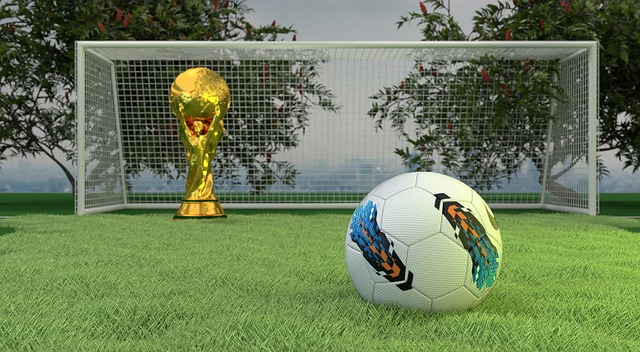Earlier this month, the world governing body of football, FIFA, held a meeting in Africa which would be key in deciding how the 2026 World Cup Finals will be played out.
The tournament’s hosts, Mexico, Canada and the United States had already been decided, as had the venues.
FIFA had also made the decision to increase the teams in the World Cup from 32 to 48 and had stated that changes would be made to the Group Stages of the finals to accommodate the extra teams without forcing teams to play more games.
It was an ambitious, but ultimately flawed plan as the announcements made earlier this month have shown.
So with that in mind, let’s take a look at how the 2026 World Cup Finals will be organised, what it means for the teams, how they will qualify and how the extra spaces in the Finals in 2026 will be allocated across the regions.
Bet365 Sport is already offering betting odds on which teams will be in the mix to win the 2026 World Cup Finals, with France the early betting favourites.
BET365
BONUS CODE: BET247
Get up to €100 in Bet Credits for new customers at bet365
Bet365 Review
Min deposit €5
Up to €100 in Bet Credits
Bet Credits available for use upon settlement of bets to value of qualifying deposit. Min odds, bet and payment method exclusions apply. Returns exclude Bet Credits stake. Time limits and T&Cs apply. The bonus code BET247 can be used during registration, but does not change the offer amount in any way.
Let’s now take a look at some of the changes that FIFA had already announced for the 2026 World Cup Finals, as well as the modifications made at their last meeting in Africa in early March.
Initial Changes From The 2022 World Cup Finals To Be In Place In The 2026 World Cup Finals

Before the 2022 World Cup Finals, FIFA had announced that it was looking into making some changes to future World Cup tournaments, ostensibly increasing the number of teams competing from the 32 that competed in Qatar to either 40 or 48 teams in 2026.
The move was the brainchild of then UEFA president Michel Platini and the incoming FIFA Chief Executive Gianni Infantino, who had been elected to the position by acquiring the backing of many African and Asian delegates by promising to increase their allocation of teams in future World Cup tournaments.
It was then announced that not only would the 2026 World Cup Finals see an increase from 32 teams to 48, but that the format of the Group Stages would change to ensure that teams played the same number of games en-route to the final as they have done in previous World Cup finals.
FIFA announced a new look Group Stage with 16 groups of 3 teams. Which was followed by a Round of 32 added to the knockout phase of the tournament.
Amendments To Those Initial Changes For The 2026 World Cup Finals
However, just this past week, while FIFA has confirmed that 48 teams will participate in the 2026 Finals, they will not be sticking with the new Group Stage format previously announced.
Instead, the tournament Group Stage will comprise of 12 Groups of 4 teams in each.
There will then be the additional Round of 32 in the knockout phase, followed by the Round of 16 (where the knockout phase has begun in previous tournaments) and then the quarter finals, semi finals, 3rd place match and the final.
This decision means that the World Cup will now need to be played over 39 days, rather than 32 days as originally planned and that the number of games played will increase from 64, to 104
Why Were These Changes Made?
FIFA outlined a number of reasons why the changes were made to the Group Stages of the tournament after the initial announcement.
A group of three teams is far more open to teams being able to collude to ensure that two teams progress.
For example, if Teams A, B and C were in a group and in the opening match Team A drew with Team B 1-1 but then in the second game, Team A lost 3-0 to Team C.
The third and final game between Team B and C could see both teams agree to let Team B win, meaning both Team B and C go through at the expense of Team A.
This has happened previously, in the 1982 World Cup Finals where Austria and Germany played out a 1-0 win for Germany without trying, a result which allowed Germany to progress at the expense of Algeria.
The second reason FIFA gave for the change was that the current 4-team group stage format with simultaneous matches played for the third games, has been very exciting for fans and teams and FIFA did not want to lose this exciting aspect of the final set of games.
How Will The Additional Spaces In The 2026 World Cup Finals Be Allocated?

The increase from 32 teams to 48 teams means that there will be 16 more teams competing in 2026 than in the last World Cup in Qatar.
This means that the number of teams each region will send to the World Cup Finals will change.
Outlined below is how the 48 teams will qualify:
- Host Nations – 3 – United States, Canada & Mexico
- CONCACAF – 3 Direct Slots (plus the 3 hosts outlined above) (2 playoff spots)
- AFC – 8 Direct Slots (1 playoff spot)
- CAF – 9 Direct Slots (1 playoff spot)
- CONMEBOL – 6 Direct Slots (1 playoff spot)
- OCEANIA – 1 Direct Spot (1 playoff spot)
- UEFA – 16 Direct Slots
That makes a total of 46 Direct Qualifying spots (including the hosts) across the different regions, with the final two qualifiers coming from the six teams that make the playoffs.
The Confederations have been awarded the extra place in the 2026 World Cup finals as follows:
- CONCACAF – +3 Direct Qualifiers (6 in total, including hosts)
- AFC – +3 Direct Spots (8 in total)
- CAF – +4 Direct Spots + 1 Playoff Spot (9 in total)
- CONMEBOL – +2 Direct Qualifiers (6 in total)
- OCEANIA – +1 Direct Qualifiers (1 in total)
- UEFA – +3 Direct Qualifiers (16 in total)
How Will The 2026 World Cup Finals Be Organised?
The 2026 World Cup Finals will be played across 16 venues in each of the three countries, three in Mexico, two in Canada and 11 in the United States.
For ease of travel and the venues are divided into three regions, West, Central and East.
- West – Guadalajara, Los Angeles, San Francisco, Seattle, Vancouver
- Central – Atlanta, Dallas, Houston, Kansas City, Mexico City, Monterrey
- East – Boston, Miami, NY/New Jersey, Philadelphia, Toronto
The 12 Groups of four will be split between the three zones, with four groups taking place in each zone being the most likely option.
Host nations are likely to play all their group games in stadia in their own country.
The Knockout Phase will then see teams playing at various pre-determined venues across all three host countries.
The upshot of this means that each of the 48 teams is guaranteed three games at the finals, but teams that reach the knockout phase will play one more game in the Round of 32 than they would have done in previous World Cup tournaments.
The 2026 World Cup Finals may be a good few years away just yet, but it is already shaping up to be the biggest World Cup Finals ever in almost every measurable way.
However, whether bigger means better, will only be discovered after the finals have been completed.